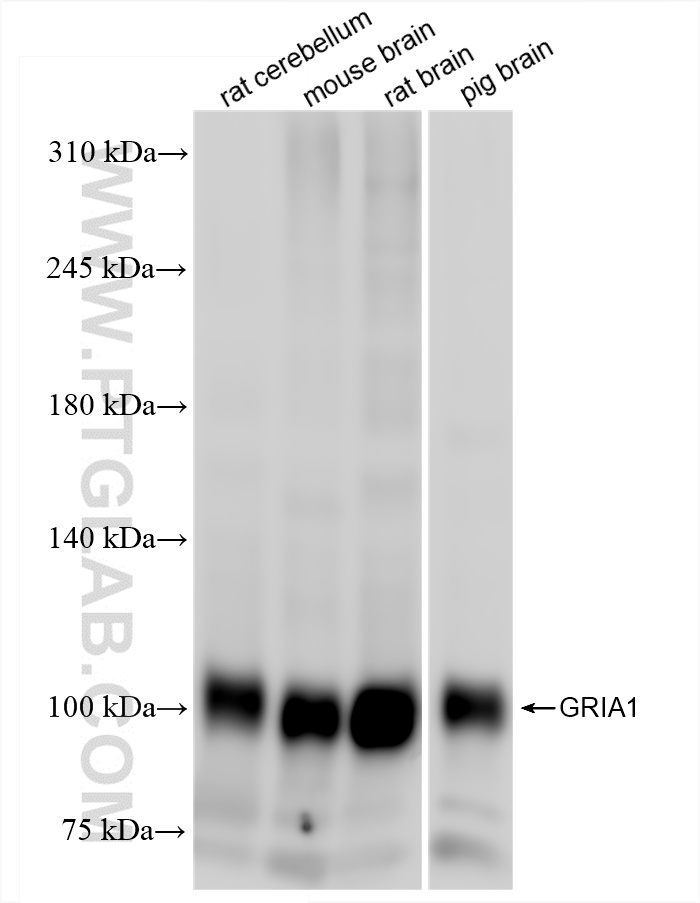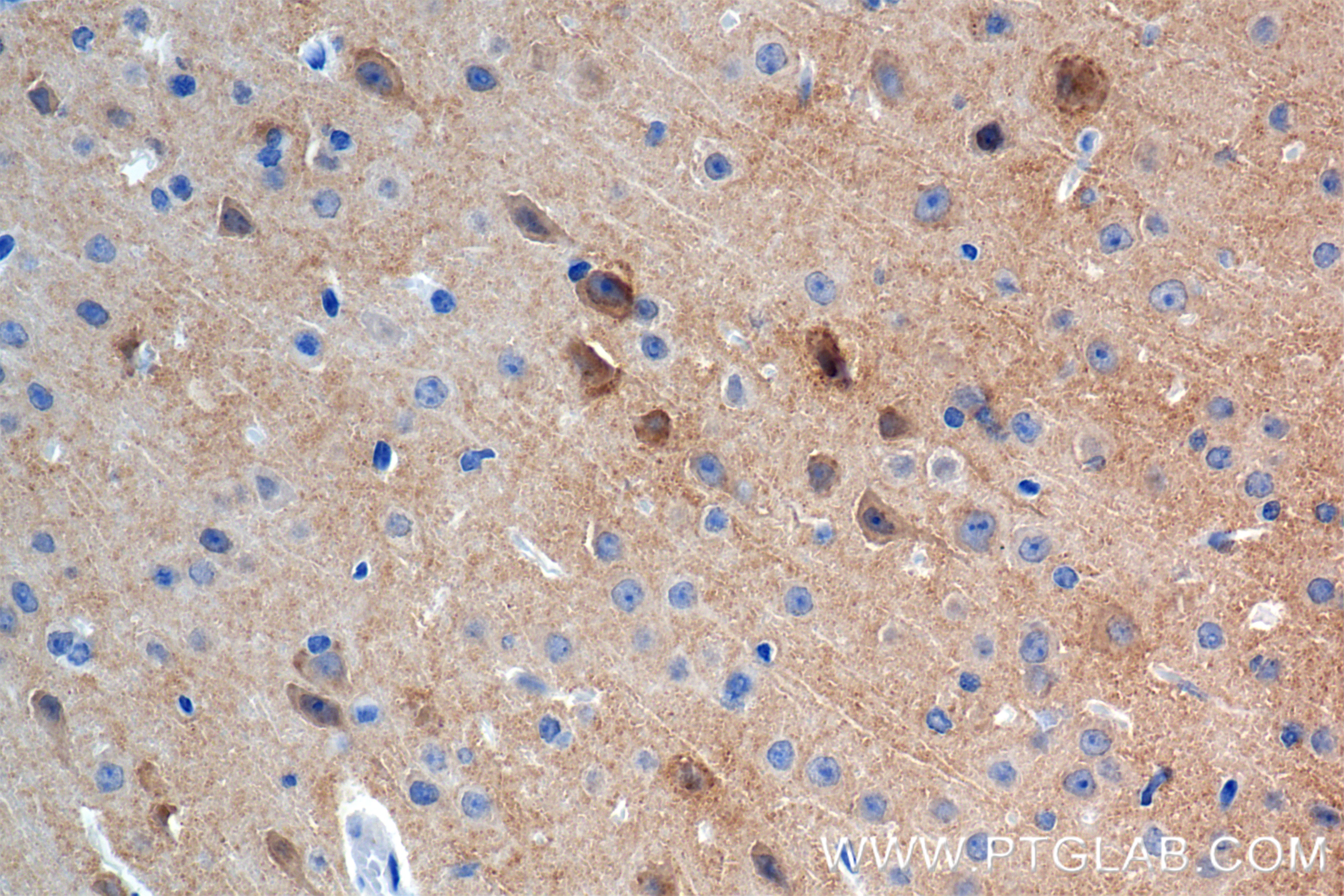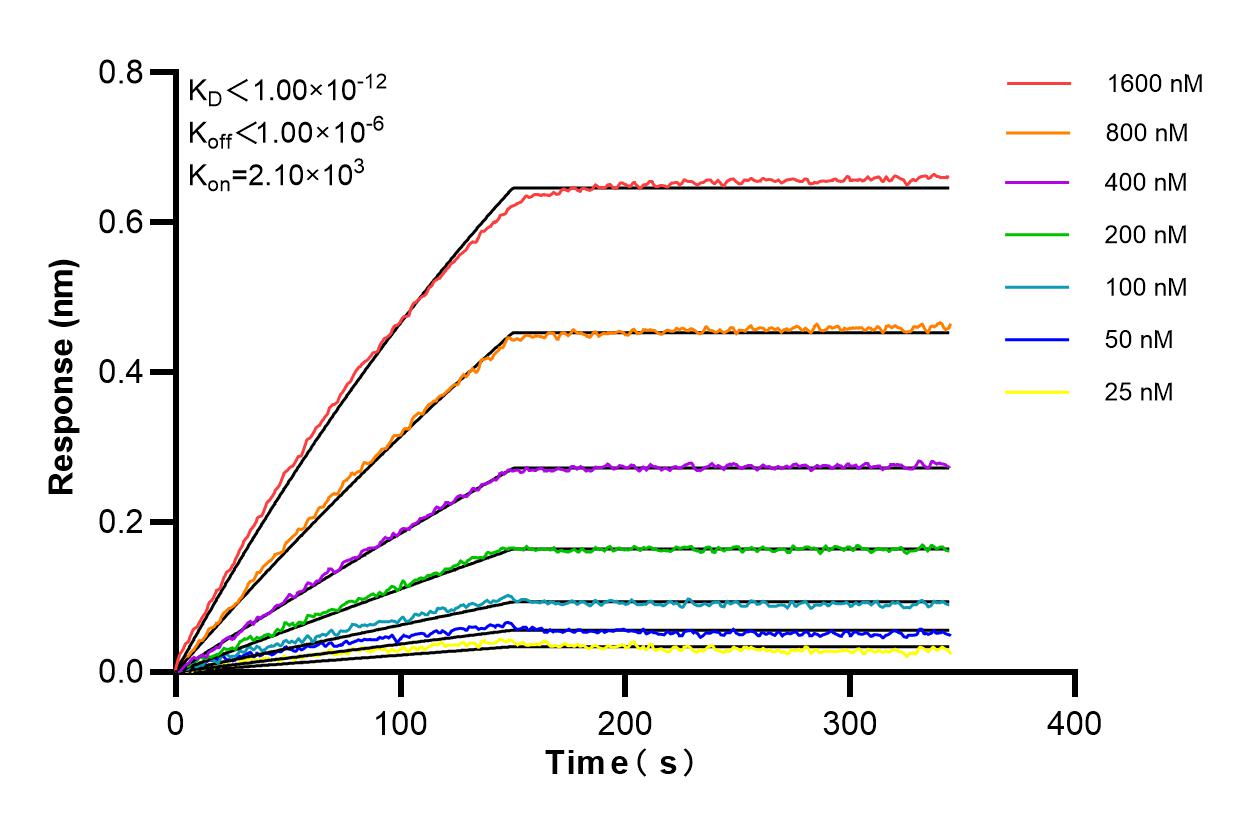验证数据展示
经过测试的应用
| Positive WB detected in | rat cerebellum tissue, mouse brain tissue, rat brain tissue, pig brain tissue |
| Positive IHC detected in | mouse brain tissue Note: suggested antigen retrieval with TE buffer pH 9.0; (*) Alternatively, antigen retrieval may be performed with citrate buffer pH 6.0 |
推荐稀释比
| 应用 | 推荐稀释比 |
|---|---|
| Western Blot (WB) | WB : 1:1000-1:6000 |
| Immunohistochemistry (IHC) | IHC : 1:200-1:800 |
| It is recommended that this reagent should be titrated in each testing system to obtain optimal results. | |
| Sample-dependent, Check data in validation data gallery. | |
产品信息
85333-1-RR targets GRIA1 in WB, IHC, ELISA applications and shows reactivity with human, mouse, rat, pig samples.
| 经测试应用 | WB, IHC, ELISA Application Description |
| 经测试反应性 | human, mouse, rat, pig |
| 免疫原 |
CatNo: Ag21502 Product name: Recombinant human GRIA1 protein Source: e coli.-derived, PGEX-4T Tag: GST Domain: 125-249 aa of BC111734 Sequence: LRPELQDALISIIDHYKWQKFVYIYDADRGLSVLQKVLDTAAEKNWQVTAVNILTTTEEGYRMLFQDLEKKKERLVVVDCESERLNAILGQIIKLEKNGIGYHYILANLGFMDIDLNKFKESGAN 种属同源性预测 |
| 宿主/亚型 | Rabbit / IgG |
| 抗体类别 | Recombinant |
| 产品类型 | Antibody |
| 全称 | glutamate receptor, ionotropic, AMPA 1 |
| 别名 | 242387E7, AMPA-selective glutamate receptor 1, GluA1, GLUH1, GluR 1 |
| 计算分子量 | 906 aa, 102 kDa |
| 观测分子量 | 100 kDa |
| GenBank蛋白编号 | BC111734 |
| 基因名称 | GRIA1 |
| Gene ID (NCBI) | 2890 |
| 偶联类型 | Unconjugated |
| 形式 | Liquid |
| 纯化方式 | Protein A purification |
| UNIPROT ID | P42261 |
| 储存缓冲液 | PBS with 0.02% sodium azide and 50% glycerol, pH 7.3. |
| 储存条件 | Store at -20°C. Stable for one year after shipment. Aliquoting is unnecessary for -20oC storage. |
背景介绍
Glutamate receptors are the predominant excitatory neurotransmitter receptors in the mammalian brain and are activated in a variety of normal neurophysiologic processes. These receptors are heteromeric protein complexes with multiple subunits, each possessing transmembrane regions, and all arranged to form a ligand-gated ion channel. The classification of glutamate receptors is based on their activation by different pharmacologic agonists. This gene belongs to a family of alpha-amino-3-hydroxy-5-methyl-4-isoxazole propionate (AMPA) receptors.
实验方案
| Product Specific Protocols | |
|---|---|
| IHC protocol for GRIA1 antibody 85333-1-RR | Download protocol |
| WB protocol for GRIA1 antibody 85333-1-RR | Download protocol |
| Standard Protocols | |
|---|---|
| Click here to view our Standard Protocols |





